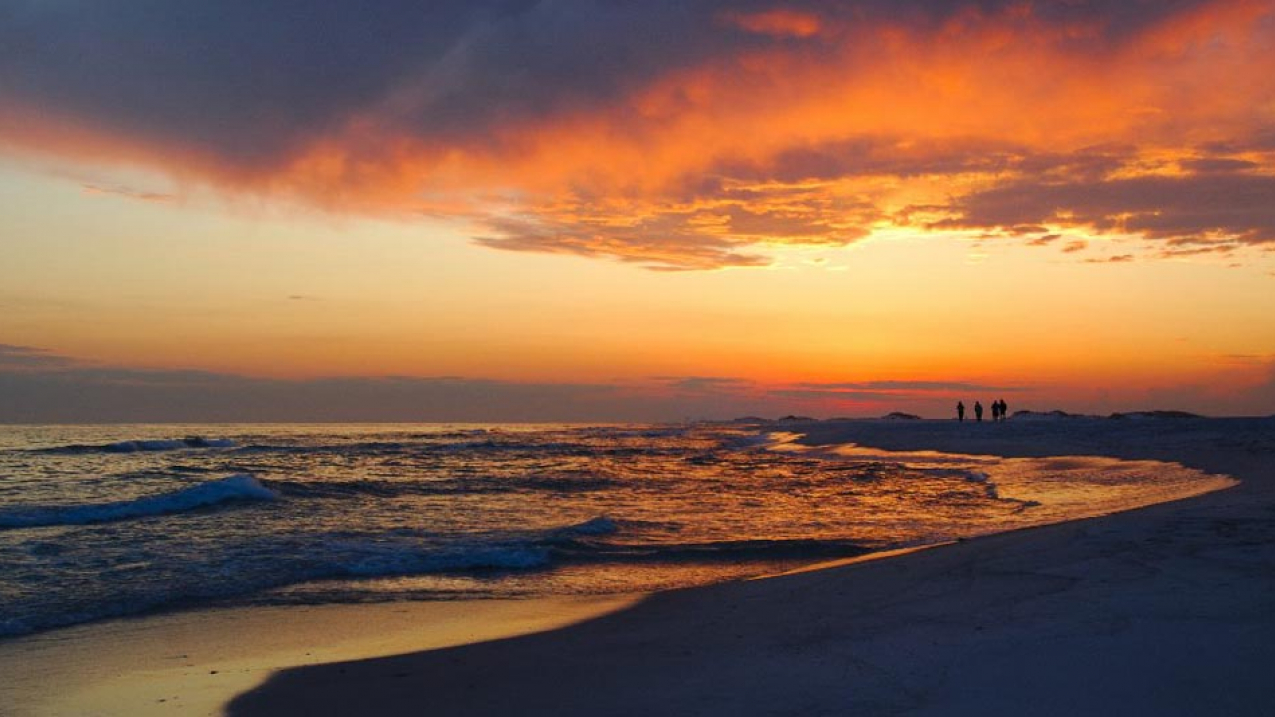
(Image credit: NOAA)
Deepwater Horizon oil spill settlements: Where the money went
Explosion triggered economic, environmental devastation, and a legal battle
The RESTORE Act results in ‘funding buckets’
Record-setting penalty
Settlement to fund a coordinated restoration effort
10 years of research funded
On April 20, 2010, the Deepwater Horizon oil rig exploded off the Gulf Coast, killing 11 people and injuring 17. So began an 87-day oil spill that spewed 3.19 million barrels, or nearly 134 million gallons, into the Gulf of Mexico. It fouled the coasts of Florida, Alabama, Mississippi, Louisiana and Texas and launched a six-year long environmental and legal battle.
The oil well was capped three months later, after 24/7 news coverage. But it left the region reeling from a disrupted coastal economy; a devastated ecosystem; the deaths of as many as 105,400 sea birds, 7,600 adult and 160,000 juvenile sea turtles; and up to a 51-percent decrease in dolphins in Louisiana’s Barataria Bay.
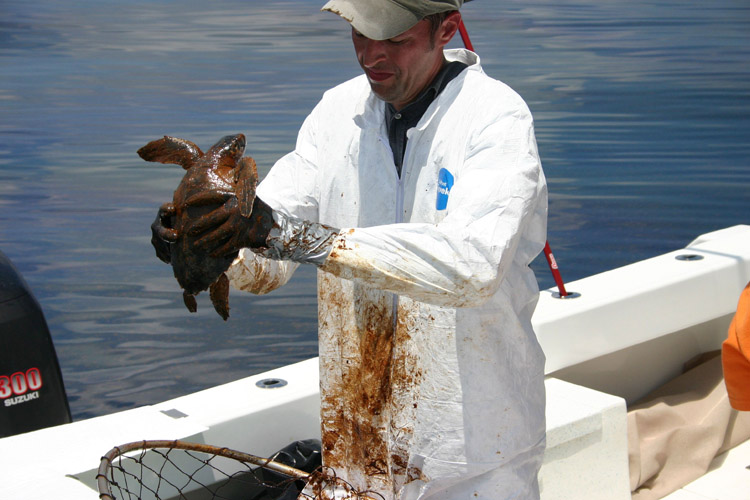
Between 4 and 8.3 billion
Number of adult oysters lost to the marketplace because of the Deepwater Horizon explosion and spill
The damage ranged from wetlands and beaches all the way down to the organisms on the sea floor. It smothered corals in oil and chemicals, and disrupted the reproductive cycles of commercial and recreational fish -- including large fish like bluefin tuna. As many as 8.3 billion oysters were lost. Investigations continue into the public health effects on coastal residents and responders who investigated and cleaned up the mess.
Largest settlement in history
What resulted from this one incident was an economic, political, scientific and legal nightmare. It was largely settled when a Federal District judge approved the largest environmental damage settlement in United States history – $20.8 billion – on April 4, 2016.
The settlement ended all civil and criminal penalty claims against the owners and operators of the rig – BP, Anadarko, TransOcean and Halliburton – under the Clean Water Act and the Oil Pollution Act. It also included economic damage claims submitted by the five Gulf states and their local governments.
When Congress passed the RESTORE Act in 2012, it dedicated 80 percent of all administrative and civil penalties from the responsible parties to ecological and economic recovery efforts in the Gulf.
That 80 percent resulted in $5.3 billion going to the Gulf Coast Ecosystem Restoration Trust Fund, dedicated to five priorities, commonly called “funding buckets”:
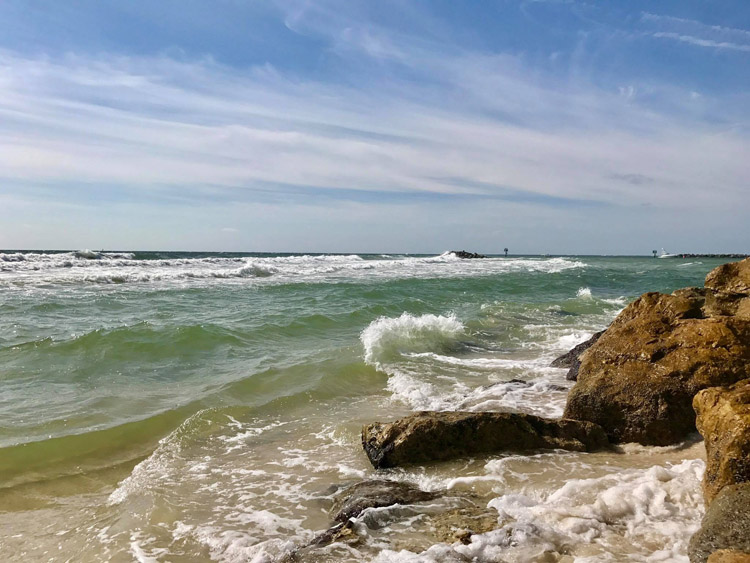
80 percent
Amount of civil penalties collected from the Clean Water Act and dedicated by the federal RESTORE Act to the Gulf.
- A “Direct Component,” managed by the U.S. Treasury, for natural resource restoration or economic improvement efforts in the five Gulf states (35 percent, $1.86 billion);
- Council Selected Restoration Component for a region-wide restoration effort to restore, protect and revitalize the Gulf Coast according to the Council’s Comprehensive Plan (30 percent, $1.6 billion);
- A “Spill Impact Component” for planning and implementing approved state projects, programs, and activities (30 percent, $1.6 billion);
- The NOAA Restore Science Program for research to support the long-term sustainability of the Gulf ecosystem, and the recreational, commercial, and charter fishing industry in the Gulf of Mexico (2.5 percent, $133.3 million);
- Establishing “Centers of Excellence,” nongovernmental organizations and academic institutions in the Gulf for science and technology (2.5 percent, $133.3 million).
The remaining 20 percent, or $1.33 billion, went to The Oil Spill Liability Trust Fund, a general government fund established in 1986 to aid in oil spill removal and assessment of the damage they have caused.
The Deepwater Horizon criminal case, also prosecuted under the Clean Water Act, resulted in the largest criminal penalty with a single entity in U.S. history. BP pled guilty in 2012 to 14 felony counts and was fined a record $4 billion–and half directly benefits the Gulf.
$4 billion
Record criminal fines paid by BP in 2012 – half went directly to aid the Gulf
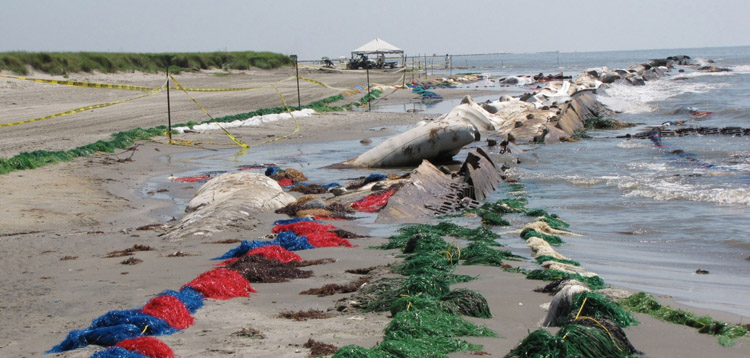
Transocean plead guilty to criminal charges in January 2013, adding $300 million from criminal fines to funding dedicated to the restoration efforts in the Gulf region and to improve oil spill response training and prevention. The fines from the criminal cases administered by the National Academies of Science offsite link and the National Fish and Wildlife Foundation offsite link are used for two programs:
- The National Academy of Sciences received $500 million to create the Gulf Research Program offsite link, a 30-year effort to benefit Gulf communities and ecosystems, and to tackle oil system safety, human health and environmental resources.
- The National Fish and Wildlife Foundation’s received $2.544 billion for its Gulf Environmental Benefit Fund offsite link. Half of that will be used to create or restore barrier islands off the coast of Louisiana, and to fund possible river diversion projects on the Mississippi and Atchafalaya rivers to preserve and restore coastal habitat. The remainder is apportioned among the other four Gulf states -- with Florida, Alabama and Mississippi receiving 28 percent each and Texas 16 percent -- to restore the Gulf Coast’s natural resources and eliminate or reduce the risk of future harm.
After the spill, state and federal agencies undertook an intense scientific study of the impacts of the spill. They used this assessment to develop a science-based, comprehensive restoration plan for the Gulf of Mexico, which will be funded through a settlement with BP for up to $8.8 billion.
NOAA led development of the preliminary restoration planning, along with the U.S. Fish and Wildlife Service and the Deepwater Horizon Trustee Council, a joint federal, state and tribal body which oversaw the overall Natural Resource Damage Assessment. This process involves investigating the effects of the spill on natural resources and determining the costs to restore them.
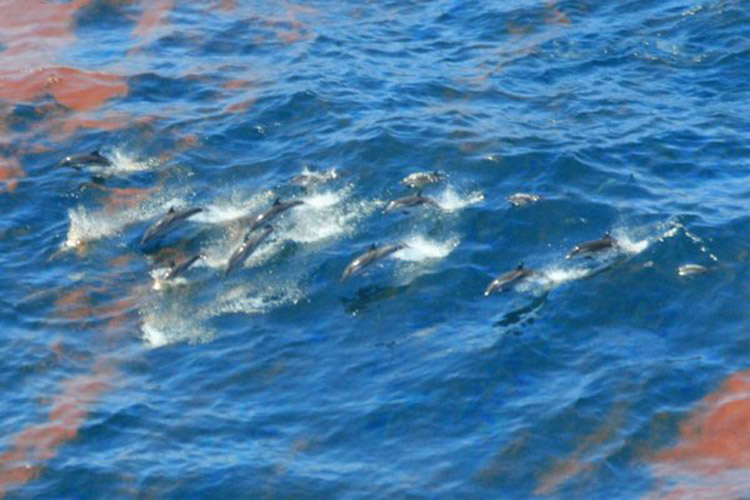
Under the final consent decree, BP will pay the trustees up to $8.8 billion, the largest recovery of damages ever for injuries to natural resources, to restore the Gulf. The settlement includes:
- $1 billion already allocated during early restoration which began in 2011.
- $7.1 billion for restoration stretching more than 15 years beginning in 2017.
Up to an additional $700 million to respond to natural resource damages unknown at the time of the agreement, and for adaptive management.
Because the effects of the Deepwater Horizon spill were so widespread, assessment teams are taking an ecosystem approach to restoring the Gulf ecosystem. Following a five-year evaluation of the damage, the Trustees issued a plan in 2016 to restore the Gulf and allocate funds from the settlement with BP. It set five goals:
- Restore and conserve habitat - $4.7 billion
- Restore water quality - $410 million
- Replenish and protect coastal living resources - $1.8 billion
- Provide and enhance recreational opportunities - $420 million
- Monitoring, adaptive management and oversight - $1.5 billion
In 2011, one year after the Deepwater Horizon oil spill, BP agreed to provide up to $1 billion toward early restoration projects in the Gulf of Mexico. Since then, the Trustee Council has approved five early restoration plans, encompassing 65 projects at an estimated cost of $866 million. These projects allowed us to start restoring the Gulf before the formal damage assessment ended. Those funds are credited towards the possible final $8.8 billion total.
Louisiana will receive more than half the funding, $5 billion, since it saw the most significant damage from the spill. Detailed allocations and project information can be found on the Trustee Council website.
Not only was BP required to pay both criminal and civil court ordered penalties of more than $20.8 billion, they funded $500 million in additional research in 2010. BP was also faced with growing private claim payments estimated at $14.8 billion in October 2016.
The goal of the $500 million, 10-year research initiative, known as the Gulf of Mexico Research Initiative offsite link (GoMRI), is to improve understanding of spill events and associated environmental stresses and public health implications.

GoMRI uses a peer-review process to award grants for independent scientific research conducted primarily at academic institutions, as well as at select for-profit entities. The funds will be used strictly for research activities, with results published in peer-reviewed scientific journals with no BP approval or review.
Other funds
The North American Wetlands Conservation Fund received $100 million from the court fines to support projects on wetlands restoration and conservation in the United States, Canada and Mexico.
Many organizations, businesses, and private citizens filed lawsuits for economic, health, and other damages over the spill, and the final $20.8 billion settlement does not cover those.
BP originally estimated as part of a Federal Court supervised program offsite link, that those private claims would total about $7.8 billion. BP set up its own private claims program unilaterally in 2010. Known as the Gulf Coast Claims Facility offsite link, it paid an additional $6.2 billion to more than 220,000 individual and business claimants.
In June, 2016 BP announced offsite link that it had come up with its final estimate of the cost for the oil spill: $61.6 billion. This included its own estimate of both the remaining business economic loss claims and the claims of businesses that opted out of the private settlement agreement, as well as the $20.8 billion settlement with the federal government and five states.
On April 20, 2010, the Deepwater Horizon oil rig exploded off the Gulf Coast, killing 11 people and injuring 17. So began an 87-day oil spill that spewed 3.19 million barrels, or nearly 134 million gallons, into the Gulf of Mexico. It fouled the coasts of Florida, Alabama, Mississippi, Louisiana and Texas and launched a six-year long environmental and legal battle.
The oil well was capped three months later, after 24/7 news coverage. But it left the region reeling from a disrupted coastal economy; a devastated ecosystem; the deaths of as many as 105,400 sea birds, 7,600 adult and 160,000 juvenile sea turtles; and up to a 51-percent decrease in dolphins in Louisiana’s Barataria Bay.

Between 4 and 8.3 billion
Number of adult oysters lost to the marketplace because of the Deepwater Horizon explosion and spill
The damage ranged from wetlands and beaches all the way down to the organisms on the sea floor. It smothered corals in oil and chemicals, and disrupted the reproductive cycles of commercial and recreational fish -- including large fish like bluefin tuna. As many as 8.3 billion oysters were lost. Investigations continue into the public health effects on coastal residents and responders who investigated and cleaned up the mess.
Largest settlement in history
What resulted from this one incident was an economic, political, scientific and legal nightmare. It was largely settled when a Federal District judge approved the largest environmental damage settlement in United States history – $20.8 billion – on April 4, 2016.
The settlement ended all civil and criminal penalty claims against the owners and operators of the rig – BP, Anadarko, TransOcean and Halliburton – under the Clean Water Act and the Oil Pollution Act. It also included economic damage claims submitted by the five Gulf states and their local governments.
When Congress passed the RESTORE Act in 2012, it dedicated 80 percent of all administrative and civil penalties from the responsible parties to ecological and economic recovery efforts in the Gulf.
That 80 percent resulted in $5.3 billion going to the Gulf Coast Ecosystem Restoration Trust Fund, dedicated to five priorities, commonly called “funding buckets”:

80 percent
Amount of civil penalties collected from the Clean Water Act and dedicated by the federal RESTORE Act to the Gulf.
- A “Direct Component,” managed by the U.S. Treasury, for natural resource restoration or economic improvement efforts in the five Gulf states (35 percent, $1.86 billion);
- Council Selected Restoration Component for a region-wide restoration effort to restore, protect and revitalize the Gulf Coast according to the Council’s Comprehensive Plan (30 percent, $1.6 billion);
- A “Spill Impact Component” for planning and implementing approved state projects, programs, and activities (30 percent, $1.6 billion);
- The NOAA Restore Science Program for research to support the long-term sustainability of the Gulf ecosystem, and the recreational, commercial, and charter fishing industry in the Gulf of Mexico (2.5 percent, $133.3 million);
- Establishing “Centers of Excellence,” nongovernmental organizations and academic institutions in the Gulf for science and technology (2.5 percent, $133.3 million).
The remaining 20 percent, or $1.33 billion, went to The Oil Spill Liability Trust Fund, a general government fund established in 1986 to aid in oil spill removal and assessment of the damage they have caused.
The Deepwater Horizon criminal case, also prosecuted under the Clean Water Act, resulted in the largest criminal penalty with a single entity in U.S. history. BP pled guilty in 2012 to 14 felony counts and was fined a record $4 billion–and half directly benefits the Gulf.
$4 billion
Record criminal fines paid by BP in 2012 – half went directly to aid the Gulf

Transocean plead guilty to criminal charges in January 2013, adding $300 million from criminal fines to funding dedicated to the restoration efforts in the Gulf region and to improve oil spill response training and prevention. The fines from the criminal cases administered by the National Academies of Science offsite link and the National Fish and Wildlife Foundation offsite link are used for two programs:
- The National Academy of Sciences received $500 million to create the Gulf Research Program offsite link, a 30-year effort to benefit Gulf communities and ecosystems, and to tackle oil system safety, human health and environmental resources.
- The National Fish and Wildlife Foundation’s received $2.544 billion for its Gulf Environmental Benefit Fund offsite link. Half of that will be used to create or restore barrier islands off the coast of Louisiana, and to fund possible river diversion projects on the Mississippi and Atchafalaya rivers to preserve and restore coastal habitat. The remainder is apportioned among the other four Gulf states -- with Florida, Alabama and Mississippi receiving 28 percent each and Texas 16 percent -- to restore the Gulf Coast’s natural resources and eliminate or reduce the risk of future harm.
After the spill, state and federal agencies undertook an intense scientific study of the impacts of the spill. They used this assessment to develop a science-based, comprehensive restoration plan for the Gulf of Mexico, which will be funded through a settlement with BP for up to $8.8 billion.
NOAA led development of the preliminary restoration planning, along with the U.S. Fish and Wildlife Service and the Deepwater Horizon Trustee Council, a joint federal, state and tribal body which oversaw the overall Natural Resource Damage Assessment. This process involves investigating the effects of the spill on natural resources and determining the costs to restore them.

Under the final consent decree, BP will pay the trustees up to $8.8 billion, the largest recovery of damages ever for injuries to natural resources, to restore the Gulf. The settlement includes:
- $1 billion already allocated during early restoration which began in 2011.
- $7.1 billion for restoration stretching more than 15 years beginning in 2017.
Up to an additional $700 million to respond to natural resource damages unknown at the time of the agreement, and for adaptive management.
Because the effects of the Deepwater Horizon spill were so widespread, assessment teams are taking an ecosystem approach to restoring the Gulf ecosystem. Following a five-year evaluation of the damage, the Trustees issued a plan in 2016 to restore the Gulf and allocate funds from the settlement with BP. It set five goals:
- Restore and conserve habitat - $4.7 billion
- Restore water quality - $410 million
- Replenish and protect coastal living resources - $1.8 billion
- Provide and enhance recreational opportunities - $420 million
- Monitoring, adaptive management and oversight - $1.5 billion
In 2011, one year after the Deepwater Horizon oil spill, BP agreed to provide up to $1 billion toward early restoration projects in the Gulf of Mexico. Since then, the Trustee Council has approved five early restoration plans, encompassing 65 projects at an estimated cost of $866 million. These projects allowed us to start restoring the Gulf before the formal damage assessment ended. Those funds are credited towards the possible final $8.8 billion total.
Louisiana will receive more than half the funding, $5 billion, since it saw the most significant damage from the spill. Detailed allocations and project information can be found on the Trustee Council website.
Not only was BP required to pay both criminal and civil court ordered penalties of more than $20.8 billion, they funded $500 million in additional research in 2010. BP was also faced with growing private claim payments estimated at $14.8 billion in October 2016.
The goal of the $500 million, 10-year research initiative, known as the Gulf of Mexico Research Initiative offsite link (GoMRI), is to improve understanding of spill events and associated environmental stresses and public health implications.

GoMRI uses a peer-review process to award grants for independent scientific research conducted primarily at academic institutions, as well as at select for-profit entities. The funds will be used strictly for research activities, with results published in peer-reviewed scientific journals with no BP approval or review.
Other funds
The North American Wetlands Conservation Fund received $100 million from the court fines to support projects on wetlands restoration and conservation in the United States, Canada and Mexico.
Many organizations, businesses, and private citizens filed lawsuits for economic, health, and other damages over the spill, and the final $20.8 billion settlement does not cover those.
BP originally estimated as part of a Federal Court supervised program offsite link, that those private claims would total about $7.8 billion. BP set up its own private claims program unilaterally in 2010. Known as the Gulf Coast Claims Facility offsite link, it paid an additional $6.2 billion to more than 220,000 individual and business claimants.
In June, 2016 BP announced offsite link that it had come up with its final estimate of the cost for the oil spill: $61.6 billion. This included its own estimate of both the remaining business economic loss claims and the claims of businesses that opted out of the private settlement agreement, as well as the $20.8 billion settlement with the federal government and five states.

